
Are you an eager tractor operator who’s ready to tackle any terrain? If so, then it’s essential that you fully understand the specific workflow involved in safely and efficiently operating your sturdy little machine on uneven or unstable terrains.
From preparation to maintenance, we'll guide you on the best practices for maintaining tractor stability on uneven and rocky surfaces and provide tips on how to prevent dangerous accidents. The more you understand the capabilities and limitations of your machine, the better you’ll be able to recognize and prevent problems.
Understand Your Terrain
Take time to survey and note any potential hazards on the ground before starting your work
Before attempting to operate a small tractor on uneven terrain, it is important to thoroughly assess the area and identify potential risks. Take some time to look for inconsistencies in the ground - from large bumps or humps, ditches, deep ruts, holes or other obstacles that can lead to damage or an accident.
Note these areas for future reference and form a plan about how you will safeguard your equipment and yourself in those areas. Taking the time to survey the landscape before starting your work is an essential best practice for preventing tractor accidents like rear overturns, tractor rolls, and other dangerous situations.
Use Your Small Tractor's Safety Features
Modern tractors are equipped with a number of safety features for your protection.
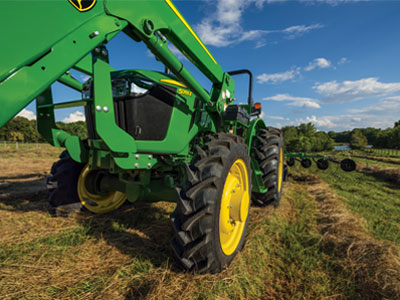
The most important thing you can do to prevent injuries, accidents, and even death is to simply use the safety features that come with your tractor. These can include a rollover protective structure (ROPS), a seat belt, and even shields or guards to protect you from flying debris or sharp objects like branches.
As a small tractor owner, you should always make sure that these safety features are in place and functioning correctly. Consult your operator's manual for information about what features you have and use them - but even if your tractor is equipped with the appropriate safety features, it doesn't mean you can take risks while operating it.
You should also observe other standard operating procedures whenever you use your tractor. This means wearing the proper clothing and footwear, familiarizing yourself with the controls, and following all safety instructions. The more you understand and practice safety, the lower your risk of serious injury or damage to your tractor chassis or tractor body.
Finally, since tractors are powerful machines, it’s important to be aware of other people. Make sure that everyone is a safe distance away during tractor operation.
Know How To Handle Hills
Be aware of how much weight you can carry and understand when to use a lower gear than normal
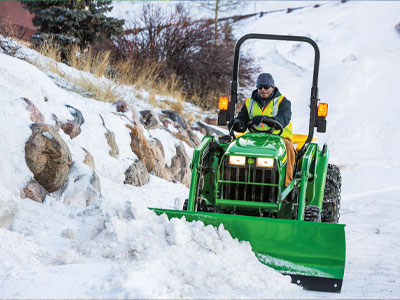
Operating a small tractor on uneven terrain can be challenging if you are not aware of the best practices. Knowing how to correctly handle hills is key for getting the job done safely and efficiently. Going too quickly or carrying too much weight on an incline could cause significant damage to your equipment.
You need to pay attention to weight distribution, especially if you're using a front end loader, to prevent tipping and rollovers. It may be necessary to use a lower gear than normal if you're carrying heavy loads on inclines. This helps keep the speed and power consistent and allows you to maintain control on rough terrain.
Reduce Speed On Slopes
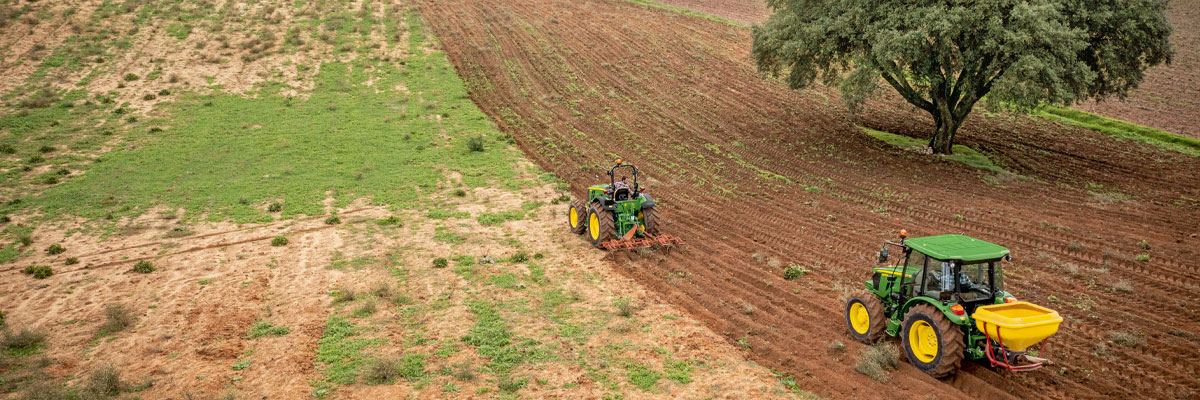
Your tractor will require more power when going uphill or downhill, so reduce your speed accordingly
When working on a slope with your tractor, it is important to remember to reduce your speed. This will help to ensure that you have adequate power in order to maintain control and keep the tractor balanced. Speeding downhill can cause damage to your equipment. It can also cause skidding or sliding if you lack power.
Reducing your speed while going at an incline will help the powerful engine work more efficiently so that you can avoid being at risk of damaging the surface or getting stuck. You should use a low gear, avoid excessive rear axle torque, and keep your tractor engine running at a steady speed to prevent stalling or losing power.
Four wheel drive tractors are less susceptible to slipping or sliding on inclines than a two-wheel drive tractor, but even these can still be affected. Make sure to shift down into a gear that is low enough for the engine to maintain a steady power output while climbing an incline.
Keep in mind how much weight you are carrying as well as the angle of the grade when selecting your speed and direction of travel. Pay attention to any signs or indications.
Use Caution Around Curves
Take extra care when turning your compact tractor around curves as it can become unstable in these areas
Working with a all terrain tractor requires special attention and care. One particular area of caution is when negotiating curves, as the ground in these areas can be especially tricky and potentially hazardous. When turning your compact tractor around curves, it is important to go slowly and make sure your footing is firm for utmost safety. Taking the time to be extra careful in these areas can help prevent accidents or damage to your compact tractor caused by instability due to uneven ground.
Keep Up With Regular Maintenance
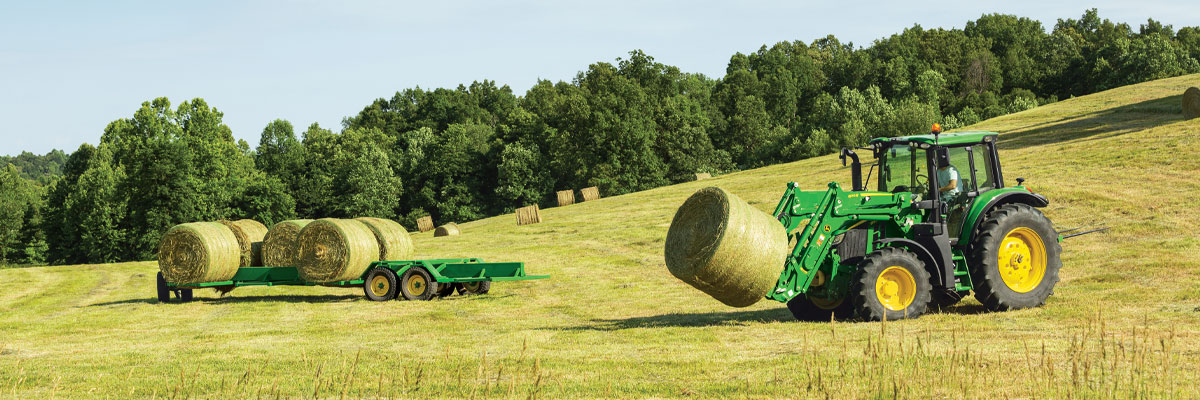
Maintain your tractor tires, brakes, and other issues to keep your compact tractor operating safely
When you are done with a task, it is important to properly maintain your tractor by ensuring that all parts are in good condition and cleaned of any debris. Check for fluids such as oil and coolant levels, inspect the brakes, and replace worn tires If you go too fast, you risk damaging your brakes or skidding out of control.
Taking the time to be conscious of maintenance will help to ensure your safety and ensure the integrity of your compact tractor. Being safe and following these basic guidelines are key when operating equipment like this.
Frequently Asked Questions
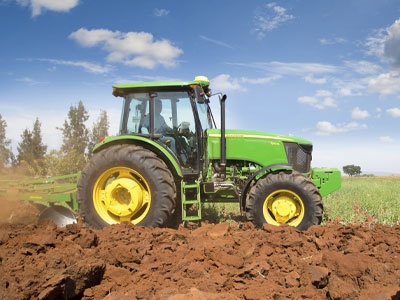
When operating a tractor, what should you do when turning crossing slopes or on rough surfaces?
When turning on slopes or rough surfaces, it is important to take your time and adjust the speed of your tractor accordingly. You should also make sure that you are able to properly control the steering wheel and brakes and avoid any sudden stops or turns which could cause instability due to uneven surfaces.
If necessary, you can use weight-distributing tools such as wheel weights to reduce the risk of tipping or skidding. For example, when driving with a loader bucket, it is important to tilt the bucket forward just below the tractor hood and drive in a straight line.
When navigating slopes, you should also reduce your speed if necessary and only turn when it is safe and practical to do so. This way, you won’t over-correct and cause your tractor to tip over. Additionally, try to keep the center of gravity low by keeping the bucket or implement close to the ground.
What safety items should I always have on my tractor?
When operating a tractor, it is important to always have the following safety items: a first-aid kit, fire extinguisher, warning triangle, personal protective equipment (PPE), and a rollover protection structure. Additionally, it is recommended that your tractor has working lights and appropriate mirrors for improved visibility. Lastly, make sure to always wear a helmet for head protection.
What should I do when driving on hills or slopes?
When driving your tractor on hills and slopes, it is important to be aware of the potential risks associated with this type of terrain. To reduce risk, you should decrease speed when going uphill and increase speed when going downhill. Additionally, you should use low gear when climbing a hill and apply brakes before shifting gears to prevent a rear overturn.